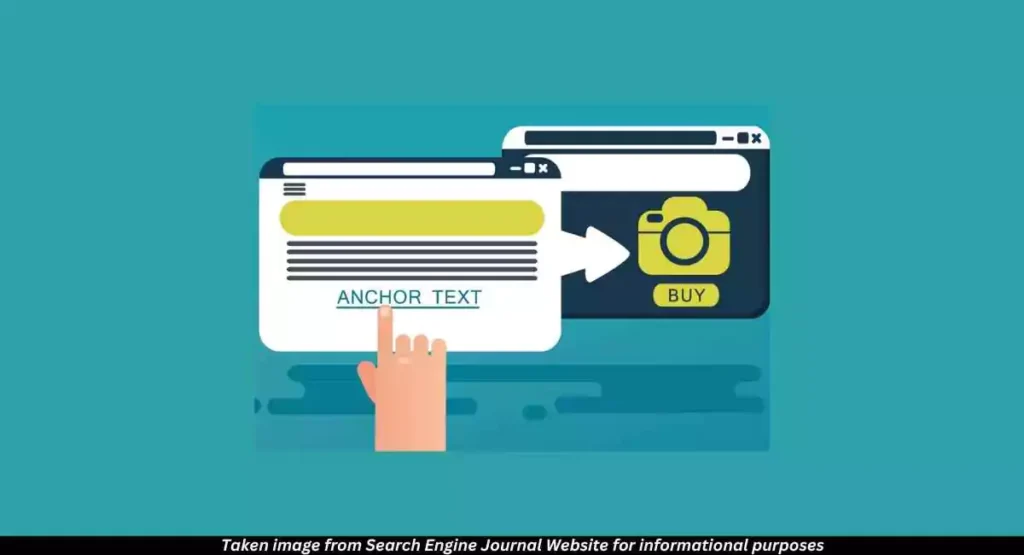Optimizing anchor text for SEO in 2024 is one of the important factors for ranking and building the authority of your website. Anchor text provides relevant information to users when they visit your page, offering a good navigation system and a healthy SEO strategy. In this article, we will learn about different types of anchor text and best practices for anchor text.
What Is Anchor Text in SEO?
Anchor text is the visible, clickable text in a hyperlink, such as “click here” or “learn more.” It plays a crucial role in SEO by informing users and search engines where the link leads. This helps users navigate your site effectively and provides search engines with context about your content.
- Improved User Experience
- Contextual Relevance
- Google Ranking Signal
- Visibility and Click-Through Rate
- Avoiding Google Penalties
Different Types of Anchor Text for SEO
Exact Match Anchor Text
Exact match anchor text uses targeted keywords as the anchor text itself. For example, “best SEO practices” links directly to a page about SEO strategies. While this method was historically overused, it is now essential to mix it with other types of anchor text to maintain a balanced and effective SEO strategy.
Examples of Exact Match
- “New York City Attractions” points to a NYC tourism page.
- “Digital Marketing Tools” directs to a page on marketing software.
- “Email Marketing” links to a page about email marketing strategies.
Partial Match Anchor Text
Partial match anchor text combines keywords with other words to create a more natural and varied linking structure. For example, instead of using just the keyword, it might say, “Stay informed about the latest changes to the Google algorithm.” This approach helps avoid appearing spammy and can boost the authority of the page by providing context and relevance.
Examples of Partial Match Anchor Text
- “Learn about digital marketing strategies“
- “Discover the best SEO practices“
- “Get insights on email marketing tips“
Branded Anchor Text
Branded anchor text uses a brand’s name as the anchor. For example, “Content Ladder Writings” links directly to a specific product or page related to the brand. This type of anchor text helps establish authority and signals high-quality links to search engines, indicating that the content is reputable and trustworthy.
Examples of Branded Anchor Text:
- “Apple iPhone 13“
- “Nike Running Shoes“
- “Coca-Cola“
- “Microsoft Office 365“
- “Amazon Prime“
Naked Link Anchor Text
Naked link anchor text simply pastes the URL as the anchor. For example, “www.reliablesource.com” shows survey results. This type of anchor text is generally not effective and can disrupt the user experience as it does not provide context or encourage clicks. Naked links can make the content look less professional and less engaging for users.
Examples of Naked Link Anchor Text
- www.example.com
- https://www.samplewebsite.org
- www.testsite.net/page
Generic Anchor Text
Generic anchor text uses phrases like “Learn More” or “Read More” as the anchor. While easy to create, it is not very informative and does not provide context about the linked content. This can lead to a poor user experience as users might not understand where the link will take them or why it is relevant. For example, a link that says “useful tool” without context does not offer much value to the user.
Examples of Generic Anchor Text
- “Click here“
- “Read more“
- “This page“
- “Learn more“
- “See details“
Latent Semantic Index (LSI) Keywords
Latent Semantic Indexing (LSI) keywords predict user search behavior and suggest related searches, helping to create relevant, search-friendly content. By using LSI keywords, you can better match user intent and improve the contextual relevance of your content. This can lead to higher search rankings and a better user experience.
Examples of LSI Keywords:
- “SEO tips” might suggest “SEO best practices,” “SEO techniques,” or “SEO strategies.”
- “Content marketing” might suggest “digital marketing,” “online marketing,” or “content strategy.”
- “Website traffic” might suggest “increase website traffic,” “web traffic tips,” or “boost site traffic.”
Image Anchors
Image anchors make images clickable, turning them into navigational elements. When an image is used as an anchor, clicking on it directs users to a linked page. This can enhance navigation and user engagement, as visual elements often attract more attention than text links. However, relying too much on image anchors can reduce accessibility, especially for users with visual impairments who depend on screen readers. Therefore, it’s essential to provide alternative text (alt text) for images to ensure accessibility and context for search engines and users.
Best Practices for Anchor Text
Importance of Relevance
- Google values keyword-relevant anchor text.
- Relevant anchors improve user trust and SEO.
- Avoid misleading or irrelevant links.
Creating a Natural Distribution
- Avoid over-optimization by varying anchor text.
- Monitor performance and adjust strategies.
- Natural distribution helps prevent penalties.
Tools for Monitoring Anchor Text
- Use tools like Ubersuggest and Semrush.
- Analyze backlink anchor text distribution.
- Adjust based on performance data.
Additional Tips
- Different types of anchor text serve various purposes.
- Use a balanced approach for optimal SEO.
- Continuously refine your strategy for the best results.
Conclusion
Optimizing anchor text is crucial for effective SEO. By using various types of anchor text, you can improve your website’s relevance, ranking, and user experience. Remember to create a natural distribution and monitor your performance regularly.
Want to increase your website traffic with no-follow links from Content Ladder? Contact us now – email at info@contentladder.in or call 9330576282 / 8420588781.
Build no-follow links with Content Ladder for:
- Regular posts
- White hat SEO practices
- Average 1000 impressions a day with a 2% CTR
- Increased traffic

